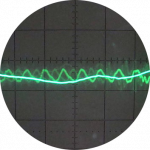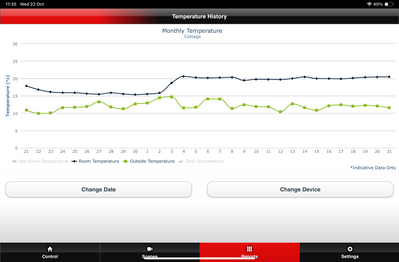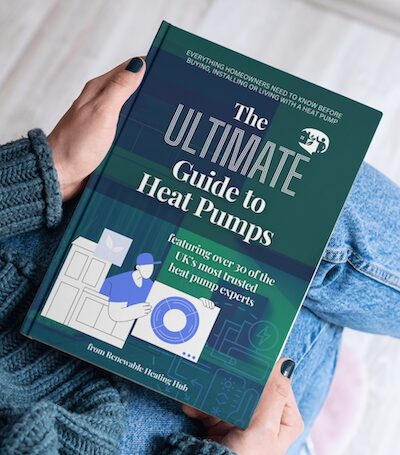[Solved] Effect of Mitsu PAR WT60 Wireless Controller
I believe hat I have correctly installed the PAR WT60 on my FTC60 which was previosly (and is still) set up for Weather compensation, as attachment and which performed reasonably well last year.
Conditions are currently marginal in the Algarve with night & evening/ time temperatures of 17-18C. I am experimenting with the wireless controller to give a comfortable living room temperature in the evening of say 23C, but I find I have set the wireless controller 2-3 degrees higher than that and I can then only achieve the desired 23C by setting the FTC6 at +5
It seems a bit extreme, but should I reset the weather compensation to, say 30C at OAT 18C?
All Tado's are set open
342sq m "Upside down" house in Algarve. Portugal
Mitsubishi PUHZ-120YUK 16kW ASHP
12 Solar Panels Growatt Inverter
2 x Growatt 7.5kW Batteries
Fronius EV Charger
Kia e- Niro 64kW
Hi David,
If your Mitsi is still on weather compensation then the WT60 should act as an internal temperature limiter. The temperature it's set to is the switch on temp and the set temp + 1C is the switch off temperature. So if you want the internal temperature to be 23C set it to 22.5C.
As your WC curve has 47C at - 1C I guess you have radiators? I ask because it is unlikely that your (or any) radiators can dissipate much heat with a flow temp of 25C and internal temp of 23C. This explains the need for your FTC +5 setting. The FTC +5 will have increased the WC curve by 5C, so the equivalent of 30C at 18C (and 52C at -1C). If 47C at -1C works for your house, then yes set the WC curve to 30C at 18C.
Hi Rob.
Thanks for your comments and I am relieved that I appear to be on the right track. I had to step in and do the PAR WT60 installation myself after my contractor failed to do so and I was rather anxious to prove that the system was working satisfactorily before the winter.
I will see how it performs when the weather changes but it was 20C last night and I have never known temperatures as high as this, almost into November.
Once again, thank you.
342sq m "Upside down" house in Algarve. Portugal
Mitsubishi PUHZ-120YUK 16kW ASHP
12 Solar Panels Growatt Inverter
2 x Growatt 7.5kW Batteries
Fronius EV Charger
Kia e- Niro 64kW
@davidalgarve I was wondering how your home performs (loses or retains heat) in these milder conditions? Since, if it’s only 17c outside at the moment what would be the indoor temperature if there was no heating operating at all?
I also seem to recall you have a large HP so my question is are you intending to raise the temperature with a higher water flow temperature to prevent cycling. And putting up with longer OFF times? Or are you planning to operate your heat pump at the low flow temperature shown on your weather compensation curve which might cause faster on/off cycling?
perhaps I’m missing some detail like a buffer tank or some other heat store in your system?
I’ve attached a graph from our MELCloud system which shows our monthly report on internal room temperature compared to our outdoor temperature. We only turned on the heating on 3rd October where you can see the jump in indoor temperature.
What is interesting is how the indoor temperature remained 3 or 5c higher than the outdoor temperature even though there was no occupancy. So the only heat gain was from solar energy through windows and roof and wall insulation.
Our heat pump is only 8.5 kw with radiators only, but we have to operate the weather compensation curve at a minimum of 34c if we want to avoid rapid cycling. At 17 c ambient our HP operates for 2 hours max then idles for 4 hours.
@sunandair We were not present to do a tidy changeover from summer to winter due to family and health problems and it was mid October before I could complete the PAR 60 installation and "switch on" so to speak.
These were also new conditions following re-piping of the buffer tank as a return leg volumiser in a radiator system, with only the one Ecodan pump, so it was very much a case of into the unknown. I don't think I can rely on any data at the moment, because the temperatures even at night, have only dropped below 17C on a couple of occasions.
It is a largish house and the temperature would not normally drop below 20-21C with OAT's of 16-17C, although that is a generalisation because there is significant heat gain in our upstairs south facing lounge and conversely, nothing on the downstairs bedroom & sitting room. (We do have solar, but this is used for topping up DHW temperature and charging the car at this time. However, this is being limited by the lower sun).
We will collect more data as the OAT drops, but I am favouring a lower flow temperature if I can get away with it. I still have to experiment with the pump flow, (currently on 3 for CH and 2 for DHW) and the consequential flow and return temperatures. (The previously fitted secondary pump had no facility for changing the speed)
I realise that this must all seem something of a nightmare in comparison with some of the carefully calculated installations described on the forum, but I have to play the hand that I am given with no reliable technical backup from Mitsubishi.
I am in touch with Havenwise and may hand over to them once I have made a little more sense of it.
Thank you for your interest and I am sorry that I could not provide more precise answers at this time.
342sq m "Upside down" house in Algarve. Portugal
Mitsubishi PUHZ-120YUK 16kW ASHP
12 Solar Panels Growatt Inverter
2 x Growatt 7.5kW Batteries
Fronius EV Charger
Kia e- Niro 64kW
- 26 Forums
- 2,364 Topics
- 53.6 K Posts
- 201 Online
- 6,029 Members
Join Us!
Worth Watching
Latest Posts
-
-
RE: Octopus Cosy Heat Pump Owners & Discussion Thread
@kevh it's worth remembering that many lsvs only actual...
By JamesPa , 3 hours ago
-

@majordennisbloodnok Education, Education, Education…
By Toodles , 6 hours ago
-

RE: Setback savings - fact or fiction?
Exactly. We only need to compare conditions, to decide ...
By cathodeRay , 9 hours ago
-
RE: Balancing financial efficiency and comfort using the Octopus Cosy tariff
I found because I have very low heat loss I can set bac...
By RadWhisperer , 12 hours ago
-
RE: Need Help Optimising My Rushed ECO4 Install: 12kW Bosch Heat Pump
Welcome @mickamills We too have an oversized 12kW Sa...
By Old_Scientist , 18 hours ago
-
RE: My Powerwall 3 Consumes 3-4 kWh/Day in Self-Consumption: Is This Normal?
@caron I can confirm that the power usage of the PW3 is...
By Old_Scientist , 18 hours ago
-
RE: Speedcomfort radiator fans
Thats true, but having tried (and succeeded) in constru...
By JamesPa , 22 hours ago
-
RE: Solis S6-EH1P8K-L-PLUS – Why I Chose It and What I’ve Learned So Far
@bash brilliant, thanks for the feedback
By energy9165 , 23 hours ago
-

RE: Heat Pump Heats the House… But It’s Not Cosy. Emitter Changes or System Tweak?
@alastair There I was, feeling grumpy, he said “Cheer u...
By Toodles , 1 day ago
-
RE: Grant Aerona: Is there a setting to keep the 2-port valve open during pump blockade
Depends on OAT. Mine cycles at OAT>10 and of course...
By JamesPa , 1 day ago
-
RE: New Fogstar 15.5kWh upright solution
@transparent My conclusion is as you have noted, tha...
By Bash , 1 day ago
-
RE: Mitsubishi Ecodan R290 10kW performance
And to you too. Wishing you a very enjoyable festive s...
By Sheriff Fatman , 1 day ago
-

RE: External pipework insulation
They do? But that isn't apparent from the photos we'r...
By Transparent , 1 day ago
-

RE: Say hello and introduce yourself
@velcro welcome to the forums. Please feel free start a...
By Mars , 2 days ago
-
Daikin EDLA11D3V3 DHW Settings
I have a newly installed EDLA11D3V3 which I'm still get...
By Velcro , 2 days ago
-
RE: Midea ASHP – how to set weather compensation
@curlykatie did you get sorted with this?
By MickaMills , 2 days ago
-
RE: MyVaillant Connect Regular Disconnect
Thanks. Yes, if the time is consistently 11pm every nig...
By buckwem , 3 days ago






